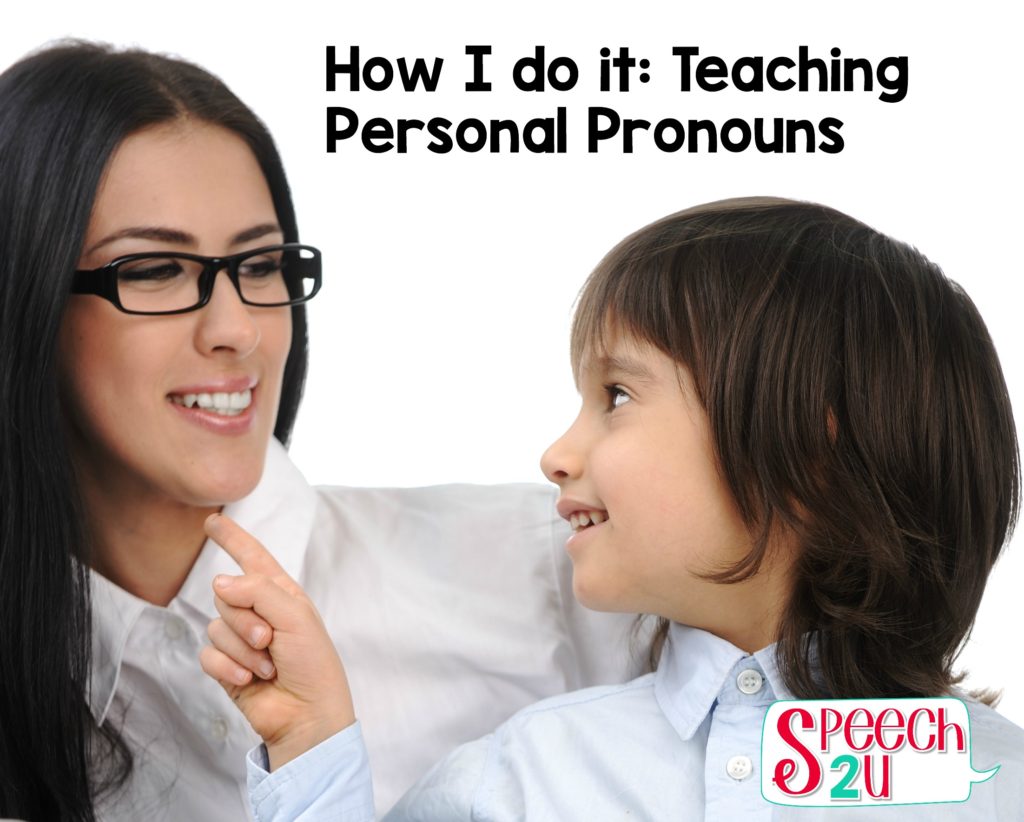Does your brain get stressed out when you are trying to teach you/me? I’ve read suggestions that you should avoid teaching or requiring personal pronouns I/me/you (particularly with autism) because the concepts are too abstract and that it might be better to refer to the child by name.
Understanding pronouns is an important first step in perspective taking. If you can’t distinguish between me/you, how can you start to understand that different people understand or think differently from yourself? Plus most children understand personal pronouns I/me/you by age 30 months.
Still, it gets tricky when you try to use verbally explain personal pronouns.
Using verbal cues to teach personal pronouns
“When I say ‘I’ that means I’m talking about me. When I say ‘you’ it means I’m talking about you. When you say ‘you’, it means you are talking about me.” Wait-what??? No wonder children get so confused.
At first I tried using the child’s name when describing pronouns verbally.
“When I say, “I,” it means me: Kelly. When you say I it means you: John. When I say you-it means the person I’m talking to. When you say you it means the person you are talking to.
Better, but I still feel like I need to take notes. I’ve had the most success teaching personal pronouns when using tactile cues.
Using tactile cues to teach personal pronouns
This is my preferred method of teaching. As I am talking I touch the referent. For example, I would say, “I want you”-by touching my chest and than the child.” I spend the first week modeling this as I’m talking and as the child is talking.
If the child with whom you are working is tactilely sensitive, you could try having pictures of each of you to use as the referent.
The second tip is to provide a motivating reason for the child to learn to use the correct pronouns. I usually start with food if the family agrees and the child finds this motivating.
We start by learning me vs. you. I usually have a small preferred snack (mini m&ms, mini cookies, goldfish crackers or other treats work well.
In this step I pick a favorite snack or activity that the child wants. I ask, who should eat it and say, “me” touching them or you ‘touching” my chest.
Usually the first few times they will say you-especially if they use echolalia. At that time I eat the treat. Yum. Natural consequence. I immediately prompt, “me.” and give them a treat also.
Eventually we start working on practicing other you/me activities including:
- Who should eat the non preferred food (you!)
- Who should blow bubbles
- Who should wind up the toy
- Who should get a certain action figure.
I fade my physical prompts so that the client is able to produce. It’s also important to switch you/me and sometimes produce me/you so that you an be sure that the client isn’t just repeating the last words you said.
Once we have learned me/you, we start working on learning possessive pronouns. At times, I will switch to work on teaching initiating questions at this stage. I use techniques from Pivotal Response Treatment in which I teach the child to initiate the question (Whose is it) and then I provide the model to teach the language form.
QUESTION: Do you teach personal pronouns? I’d love to hear your thoughts and tips!
If you thought these tips were helpful, I’d be super grateful if you would share this post on Pinterest or Facebook.


